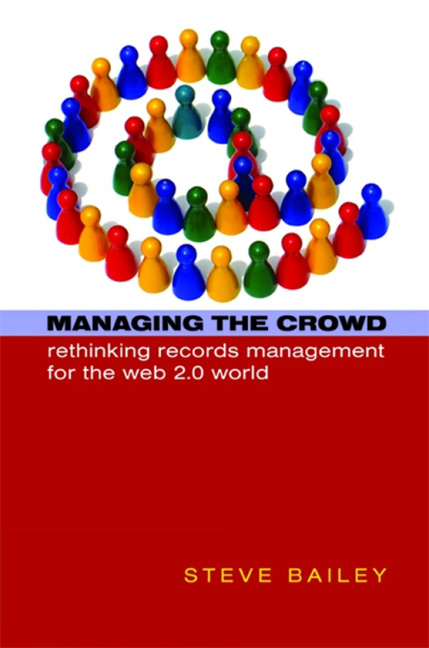Book contents
- Frontmatter
- Dedication
- Contents
- Foreword
- Preface
- Part 1 The Nature Of The Changing World
- 1 The big picture: Web 2.0 and current trends in IT
- 2 The reality check: surely change is endemic in IT?
- 3 Web 2.0 and Office 2.0: enter the third paradigm
- 4 Welcome to the world of Office 2.0
- Part 2 Is records management no longer fit for purpose?
- Part 3 Records Management.0 And The Future Of Records Management 121
- Index
4 - Welcome to the world of Office 2.0
from Part 1 - The Nature Of The Changing World
Published online by Cambridge University Press: 08 June 2018
- Frontmatter
- Dedication
- Contents
- Foreword
- Preface
- Part 1 The Nature Of The Changing World
- 1 The big picture: Web 2.0 and current trends in IT
- 2 The reality check: surely change is endemic in IT?
- 3 Web 2.0 and Office 2.0: enter the third paradigm
- 4 Welcome to the world of Office 2.0
- Part 2 Is records management no longer fit for purpose?
- Part 3 Records Management.0 And The Future Of Records Management 121
- Index
Summary
Questions addressed in this chapter
• How might Web 2.0 and Office 2.0 be adopted and implemented within an organization?
• What steps might (perhaps inadvertently) lead an organization down this path?
• What might become of the role of the records manager in this world?
The scenario
The fictitious organization described in this chapter is intended as a prediction of how the trends and technologies driving the Web 2.0 movement might change the way in which our workplaces function. So far as it is possible to put a date on when this scenario is set, it could be somewhere within the next five to ten years. However, it should also be remembered that from the technical perspective all that is being described is already available and could be put in place now.
Our organization is a medium-sized, private-sector management and business services consultancy company, with around 800 staff. As well as its main central office, it has staff based in various host organizations around the country, and a small team of client managers who spend the vast majority of their time travelling the length and breadth of the country, establishing new contracts and maintaining existing ones.
Outsourcing e-mail
In line with many other companies, our organization chose a few years ago to outsource their e-mail service to Google Mail. It seemed a sensible decision at the time and has proved a very successful and popular one since. Management like it because it has significantly reduced the overheads involved in storing and maintaining an in house, mission-critical business service. The IT team like it because they had been finding it more and more difficult to provide the 24/7 zero-downtime level of service users were demanding, and now freed from the yoke of maintaining such a service have been able to be much more creatively and usefully employed. And, most importantly of all, the users like it. Of course they now take its reliability for granted (though do still offer up a silent prayer of thanks at 10.30 p.m. on a Sunday evening when, desperate to confirm some information before a meeting the following morning, they find the service is up and running).
- Type
- Chapter
- Information
- Managing the CrowdRethinking records management for the Web 2.0 world, pp. 39 - 50Publisher: FacetPrint publication year: 2008



